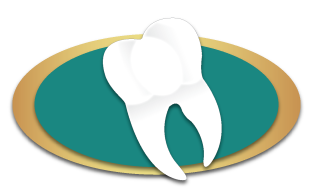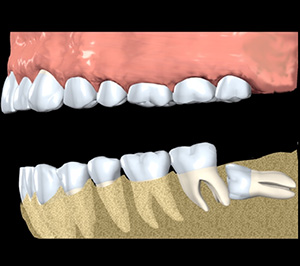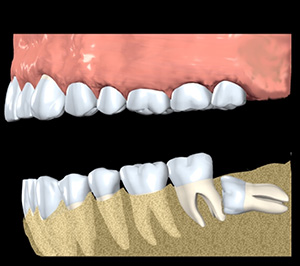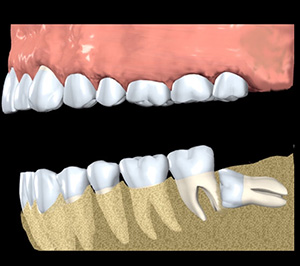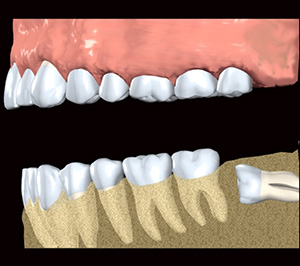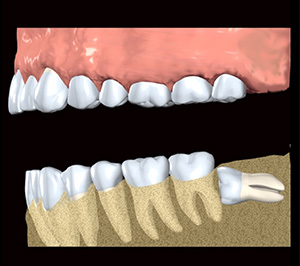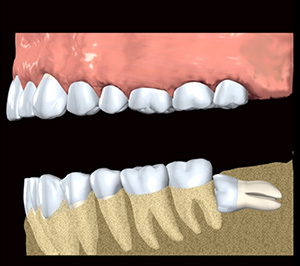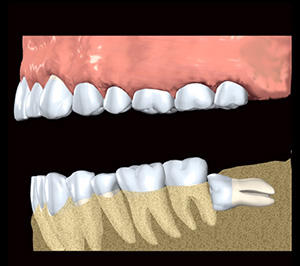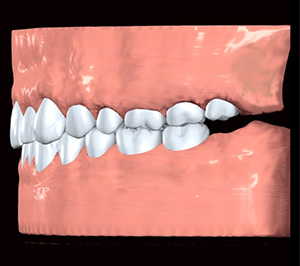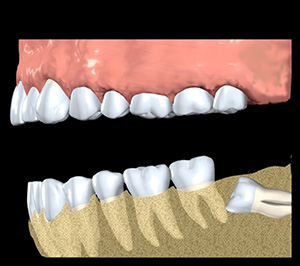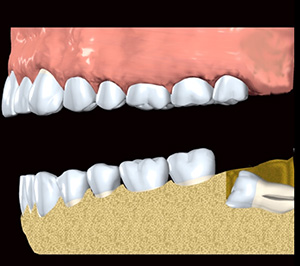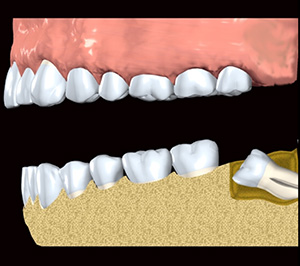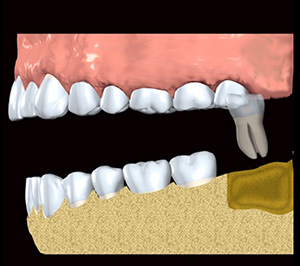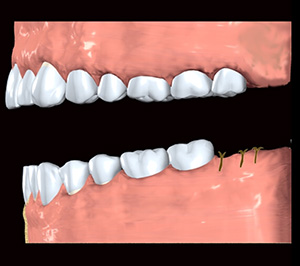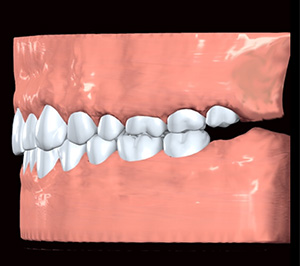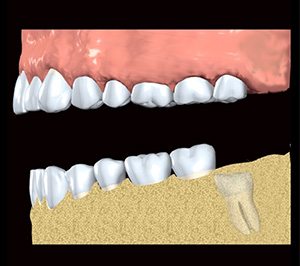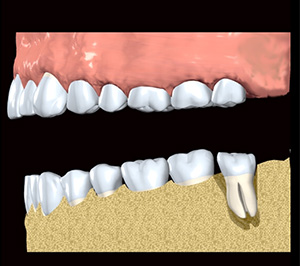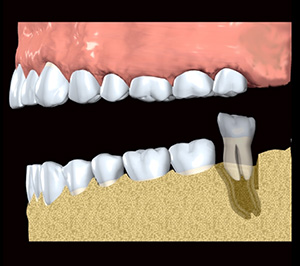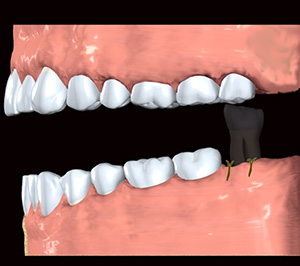At one time in the history of man, wisdom teeth (or third molars) were most likely an important part of our entire tooth structure, but that is no longer true. Because of a lack of adequate space in the jawbone for them, wisdom teeth that usually come in somewhere in our late teen years, often come in sideways pushing at an already established tooth, which causes the wisdom tooth to only partially erupt through the gums, or in some cases, it does not push through the gums at all and stays impacted under the surface. Bacteria can grow around a partially erupted wisdom tooth causing periodontal disease or food can get caught between the wisdom tooth and the adjoining tooth creating tooth decay in both teeth. When a fully erupted wisdom tooth needs to be extracted, it is pulled like any other tooth. However, if the tooth is partially or fully impacted under the gum line and in the jawbone, an incision has to be made in the gums and the tooth, as well as a portion of the bone that is covering the impacted tooth, has to be removed.
